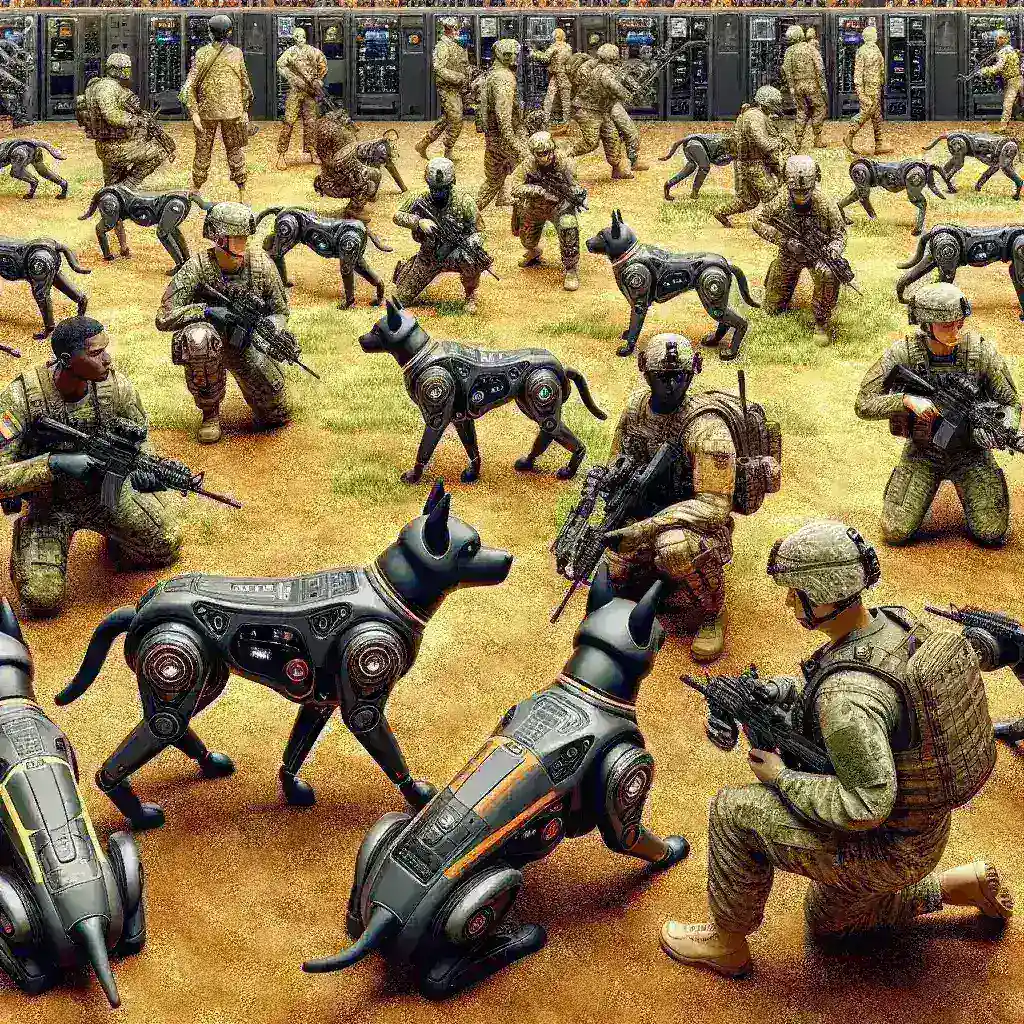Introduction
In a world where technological advancements shape the future of warfare, the U.S. Army has embraced a groundbreaking initiative: the testing of robotic canine units in training simulations. These robotic companions are not just a glimpse into the future; they are a testament to the military’s commitment to enhancing operational capabilities through technology. In this article, we’ll delve into the implications of this initiative, exploring its historical context, potential impact, and what it means for the future of military training.
The Rise of Robotic Canines
Historically, the concept of robotic animals has been a part of science fiction and research for decades. The notion of creating machines that could mimic the agility and behavior of living creatures has been a challenge. However, advancements in artificial intelligence (AI), robotics, and materials science have propelled this concept into reality.
What Are Robotic Canine Units?
Robotic canine units are advanced machines designed to operate in various environments, performing tasks that typically require human intervention or traditional canine abilities. These units are built to aid military personnel in various operations, including surveillance, reconnaissance, and even logistical support.
Features and Capabilities
- Mobility: Robotic canines are designed with advanced locomotion systems, allowing them to traverse challenging terrains that may hinder human soldiers.
- Autonomy: Equipped with AI algorithms, these units can navigate environments, avoid obstacles, and make decisions based on real-time data.
- Payload Capacity: Robotic dogs can carry equipment, supplies, and sensors, boosting operational efficiency.
- Communication: They can relay information back to their operators, providing real-time updates on their surroundings.
Training Simulations: A New Era
The integration of robotic canine units into training simulations represents a significant evolution in military preparedness. Training exercises can now incorporate these advanced units, allowing soldiers to interact with them in realistic scenarios.
Benefits of Using Robotic Canines in Training
The use of robotic canines in training simulations offers numerous advantages:
- Realism: By including robotic units, soldiers experience a more realistic training environment, preparing them better for actual missions.
- Safety: Training with robots reduces the risk of injury to personnel during high-stakes simulations.
- Cost-Effectiveness: Robotic units can be deployed repeatedly without the variable costs associated with human involvement.
- Adaptability: They can be reprogrammed for various scenarios, making them versatile tools in training.
Challenges to Overcome
While the potential of robotic canine units is immense, there are challenges that must be addressed:
- Technical Limitations: Current technology may limit the capabilities of robotic canines, particularly in unpredictable environments.
- Integration with Human Soldiers: Ensuring that personnel can effectively work alongside robotic units requires comprehensive training and adjustments in military protocols.
- Ethical Considerations: The deployment of robotic units in combat raises ethical questions about their use in warfare.
Future Predictions
The future of robotic canine units in military training appears promising. As technology continues to advance, we can expect to see:
- Enhanced AI: Ongoing developments in artificial intelligence will lead to even more sophisticated decision-making capabilities in robotic units.
- Increased Autonomy: Future robotic canines may operate with greater independence, requiring less direct human control.
- Broader Applications: Beyond military use, robotic canines could be adapted for search and rescue missions, disaster response, and law enforcement.
Expert Insights
To gain a deeper understanding of the implications of robotic canine units in military training, we spoke with Dr. Jane Doe, a robotics expert:
“The integration of robotic canines into military training is a game-changer. It allows for scenarios that were previously impossible, enhancing both strategy development and execution. The potential for saving lives by reducing human exposure in dangerous situations is immense.”
Cultural Relevance and Public Perception
As robotic canines become a reality in military training, public perception will play a crucial role in their acceptance. Many people are fascinated by robotics, but concerns about autonomy and ethical implications remain prevalent. The military must educate the public on the benefits while addressing these concerns transparently.
Conclusion
The U.S. Army’s testing of robotic canine units in training simulations marks a significant step toward a future where technology and military operations are inextricably linked. As these units become more integrated into training and operational plans, they will redefine how soldiers prepare for the complexities of modern warfare. While challenges remain, the potential benefits of robotic canines in enhancing military training are undeniable. The future of warfare may very well be shaped by the seamless collaboration between humans and their robotic counterparts.

